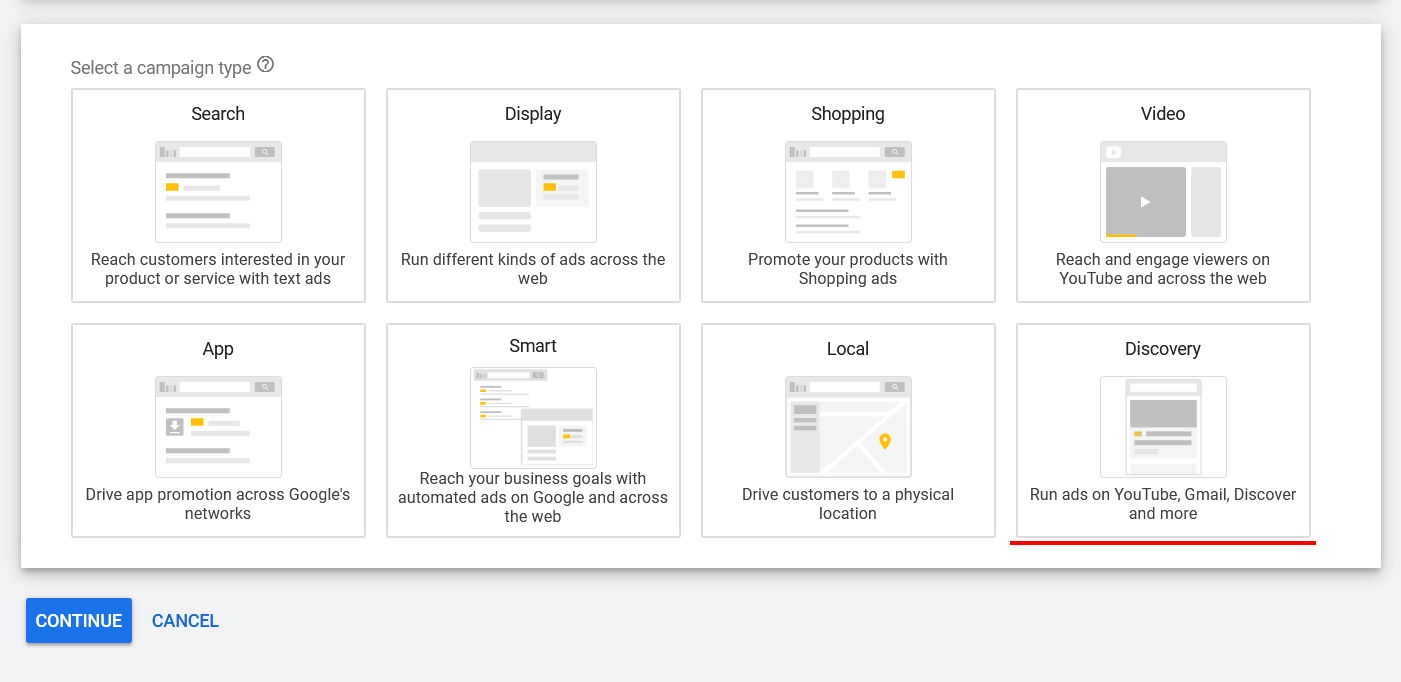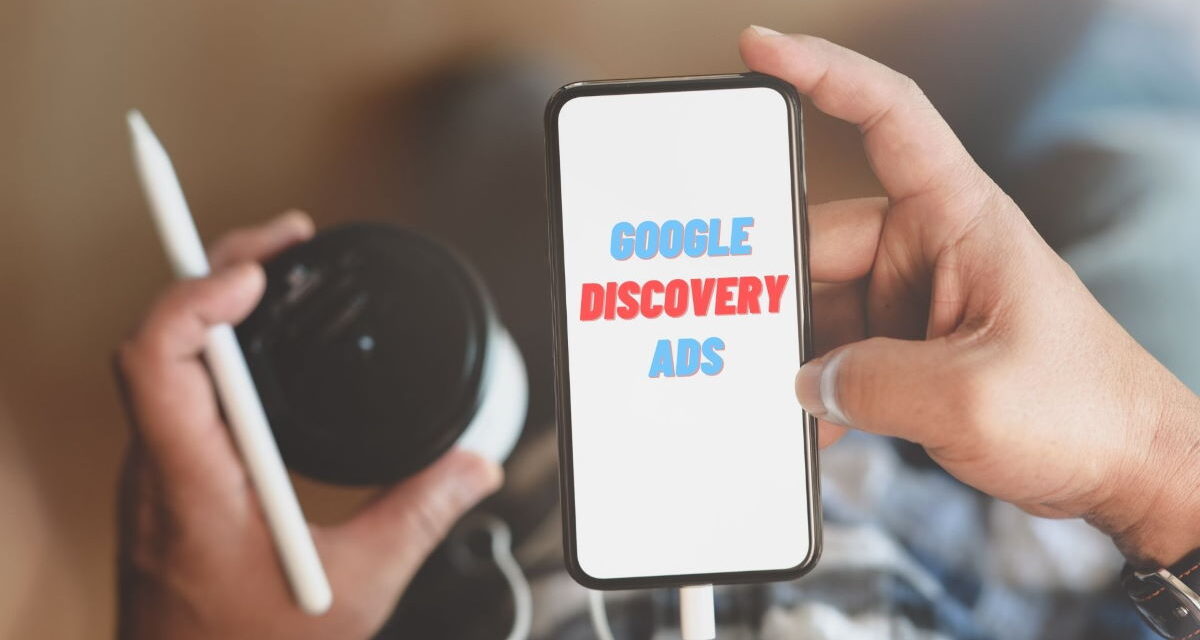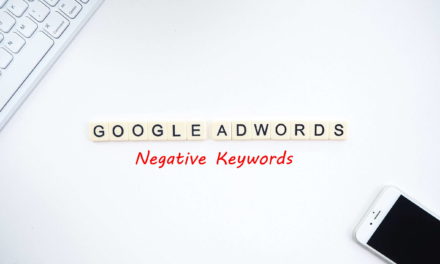Discovery ads by Google, also referred to as Google discovery campaigns is one of the best kept secrets of the entire platform.
Well its not exactly a secret but not too many advertisers are yet focusing on them. Most marketers prefer campaigns on Google Search and the Display Network.
If you haven’t advertised on Google discovery ads yet, I do suggest you give it a try as you can potentially get good quality clicks at a cheaper cost than usual.
What are Discovery Ads by Google?
Discovery Ads are those ads that appear in a feed of any Google product whether on mobile or desktop.
To understand this better, consider the following examples:
Discovery Ads Examples:
- YouTube feed when users are scrolling through videos either on their home feed or after searching for anything specific.
- The Google feed that you have on all android smartphones. This appears on the Google App itself or on Chrome.
- Feeds that accompany Google Maps and other similar platforms.
- Gmail Ads
- Any Google property where users can simply scroll going through suggested content.
The basic idea is that while users scroll through their suggested feeds on any Google platform, you can have your advertisement appear to those users that match your demographics and interests criteria.
Who is it meant for?
While discovery ads by Google can be utilized by just about any advertiser, I believe the following are the best fit for the ad type.
- Ecommerce sites trying to sell specific merchandises like a lifestyle product.
- Content site owners aiming for quality traffic to their blog or article.
- If you are trying to generate a lead and not specifically looking at sales right away.
Most discover ads engagement happen on mobiles so keep that in mind when developing your advertising strategy.
Discovery Ads requirements and specs
Getting started with discovery ads is quite simple.
All you need is:
- Ad headline
- Ad description
- Ad Image
- Logo
- Business name
Note that the logo and business name is mandatory while setting up discovery ads. Also you can have multiple ad headlines, descriptions, images for each campaign.
Discovery Ads specs
- The headline needs to be of maximum 40 characters
- For landscape images, the recommended dimension is 1200×628 with 5 mb maximum size.
- The minimum image size is 600×314 although it is recommended you opt for the better resolution provided in the point above.
- For square images, the recommended dimension is 1200×1200 with a minimum of 300×300. Again the file size cannot be over 5 mb.
- Images can be jpg, png or gif. Note if you are using a gif, it needs to be static and not animated.
- Business name needs to be of maximum 25 characters. You can have your website name as business name if you wish.
- Description needs to be of maximum 90 characters.
You can add your final URL where users will be taken after clicking your ad along with a call to action text.
The call to action text can be selected from the dropdown provided by Google Discovery Ads.
Discovery Ads vs Display Ads
Considering how similar discovery ads are to display ads in Google, many advertisers are often confused between the two.
Usually there are two main questions when wondering about the ad types:
What is the difference between Discovery Ads and Display Ads?
While in terms of looks, the ads feel the same, discovery ads appear on Google feeds on various Google platforms. The reach of discovery ads is in the hundreds of millions of users that browse through Google feeds on their smartphones and desktops on a daily basis.
In display ads, you have access to the millions of websites or blogs owned by publishers who have signed up for Google’s adsense program. Hence over here, your ad is being displayed on various websites as you browse the internet. These ads could be in the sidebar or within the content of the article itself.
Both discovery ads and display ads allow you to choose similar targeting options. However, in discovery ads, since it is on Google’s own platform, you have AI based targeting. Discovery ads are trying to reach an audience the AI thinks is ideal for your product or service. It is trying to pull users towards your webpage or app. These are users who have a history of searching for similar products or are seen as warm leads.
In display ads, your ad is getting triggered by either of two conditions; First if the content of the webpage the user is browsing matches what you are selling. Second, if the user has shown any interest in your type of product or service in the past. It could be in the form of a click or search phrase or anything that tells Google this user is a potential lead.
Is Discovery Ads better than Display Ads?
Honestly, that one is a bit tough to answer at the moment.
Both discovery ads and display ads pull users towards your sales page. They are not as warm a lead as a direct Google search.
However, many marketers believe Google’s AI is working actively to learn and understand user behaviour and accordingly it pushes ads on its discovery feeds. Hence discovery ads could be a great alternative to display ads especially if you have already tried display ads without much success in the past.
How to setup Google Discovery Campaigns in the Google Ads platform?
Creating a Discovery Ads Google Campaign is as straightforward as a regular campaign. In fact, the steps to create the new campaign is exactly the same.
1) First, log in to your Google Ads account and click on new campaign.
2) For campaign goal, choose between sales, leads, web traffic or select ‘create a campaign without a goal’s guidance.’
3) You will then be asked to select campaign type. Over here you need to select ‘Discovery’.
Refer to the graphic below to view how it looks.

4) After this, it is the same as any other Google search or display campaign. Select your audience location, language and other targeting options.
If you are using a remarketing list, this is where you set it up.
5) Next, you need to select your bid strategy and add your daily or overall budget for the campaign.
6) Once you save the above information, you can then go ahead and start creating your ads.
Remember, you need your ad headline, description, image, landing page URL, logo and company name.
You may also upload multiple images per ad to create a carousel effect.
7) Along with your ad creatives, select your call to action and save.
Once all your ads have been setup, you may click finish.
In most cases, ads start appearing within 24 hours as Google completes the initial campaign approval process.
Final thoughts
Discovery Ads on Google is a great way to reach a highly engaged audience within Google’s properties.
The daily reach of Google runs into billions with its desktop and mobile applications.
I do believe discovery ads are worth trying out especially if you already use Google Display ads or use remarketing lists as this can provide additional value to your campaign.





